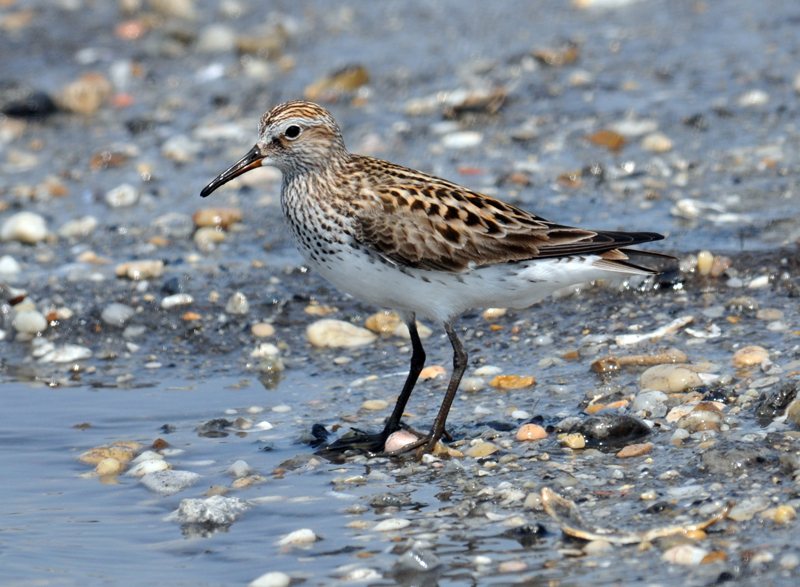

This development seems bizarre since experiments have shown that a decrease in the amount of male care is linked to a decrease in male fitness by lowering the number of male descendants that survive. There are only three documented species who have been known to share this behaviour.

This is unlike other members of the calidris genus where incubation is shared between males and females therefore, the trait of male incubation has been independently lost in this species. Once the female has laid the eggs, the male stops displaying and leaves the breeding grounds. The eggs can sometimes be blotched with brown, olive-brown or grey spots. She generally lays 4 olive to green eggs laying 3 eggs is rare. In total, the females incubate the eggs for about 22 days. Consequently, the females spend an average of 82.5% of their time incubating their eggs. The females are small and nest in the high arctic, which means they are more likely under a higher cold stress than birds nesting in temperate areas. The chase ends when the male does a wing raising display, which is common in many sandpiper species. However, once they have landed on the ground the male begins to chase the female. A few minutes later they initiate a second paired flight identical to the first one. During their downward glide their wings are held together in a "V" position above their backs. They hover between 5 and 10 seconds before descending to the ground slowly and silently and land about 2 m apart.
WHITE RUMPED SANDPIPER SERIES
The male remains above the female and repeatedly releases a series of "poing-zee" notes. At about 10 m above the ground they stop about 0.5 m apart and hover with shallow, rapidly vibrating wingbeats. During courtship the male and the female fly upward side by side at an angle. There is also a thin white stripe on the wing and a row of marks on the flanks below the wings.Īs with most shorebirds, the courtship behavior of the white-rumped sandpiper involves an aerial component.

Baird's sandpiper also shows this trait but can be distinguished by the lack of a white rump. Its long wings extend beyond the tail by about a quarter inch.
WHITE RUMPED SANDPIPER PATCH
The white patch on the rump can be seen while the bird is in flight. The underparts and supercilium are white, the crown is brownish in color, and the face is paleThe two primary features used to identify this bird in the field are its long wings and its white rump. The breast is finely streaked and there is a white "V" on its back. These have brown edges towards the scapulars and whiter edges towards the wing coverts. The juvenile plumage features black-based feathers on the back and wing coverts. The supercilium is white, while the crown and eyeline are darker. The underparts are white but the breast is dark grey. In adult basic plumage, the upperparts are a dark grey and at the centers there are black feathers. The breast and flanks are streaked and the underparts are white. The supercilium is pale, there are black feathers on the back and there are grey edges on the wing coverts. In adult alternate plumage, the crown and face have a brownish tinge. The plumage is much less distinct during the winter however, during all seasons males and females remain similar in their appearance. This bird is often mistaken with many similar-looking sandpipers that live in its range or along its migration path. Its beak is of medium length, thin and dark, and its legs are very dark. The top of its body is a dull grey-brown color and it has a white eye stripe. The white-rumped sandpiper is a relatively small bird measuring only 7.8 in.


 0 kommentar(er)
0 kommentar(er)
